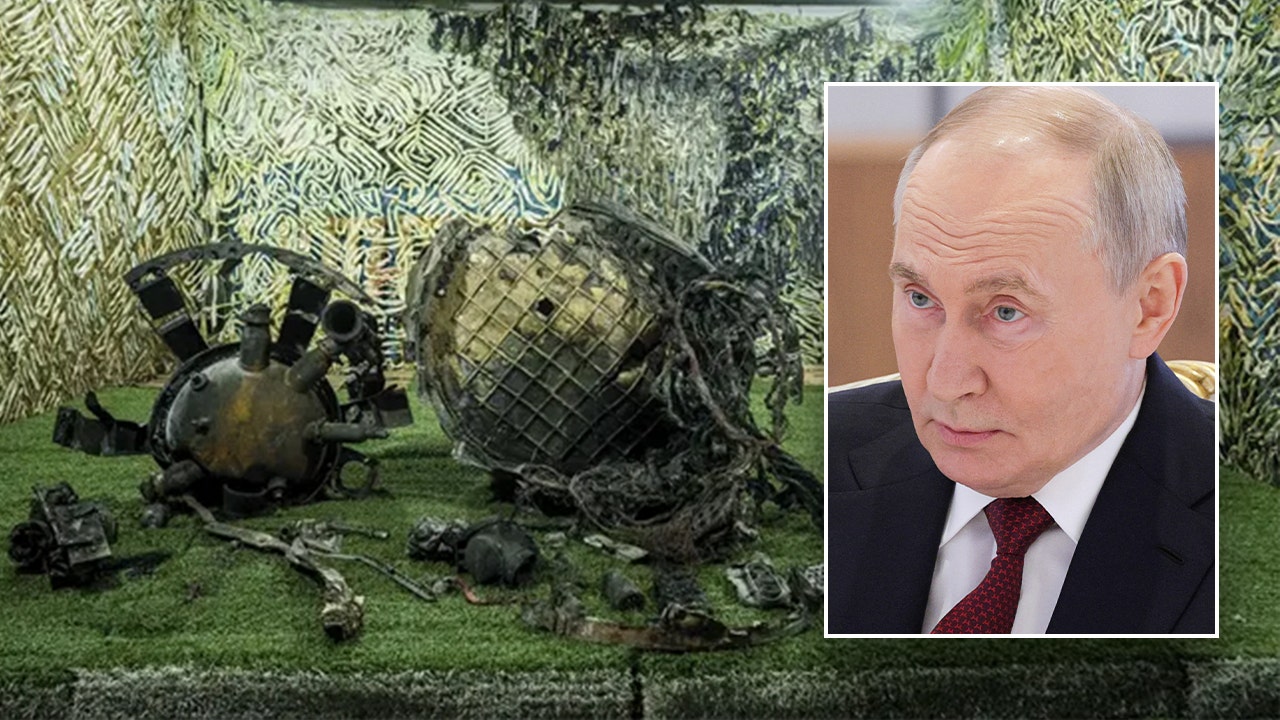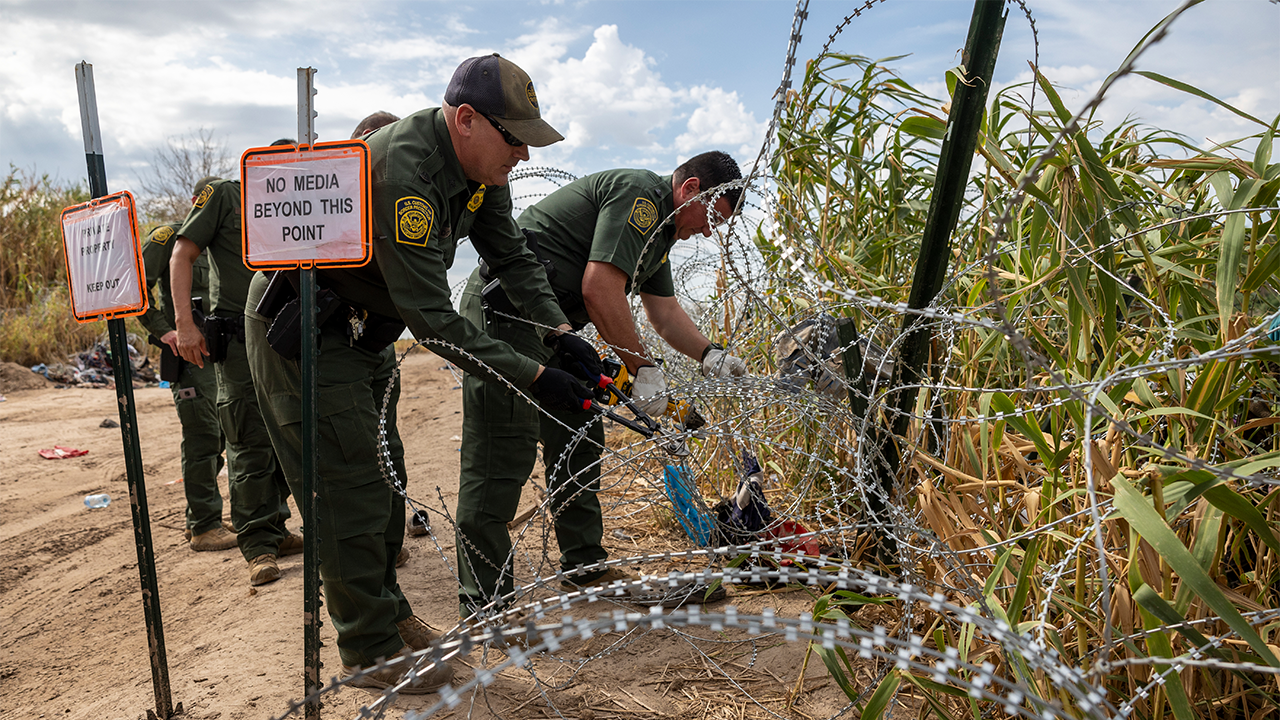World
UN court issuing appeal ruling in long-running trial of 2 Serbs accused of crimes in Balkan wars

THE HAGUE, Netherlands (AP) — Two allies of late Serbian President Slobodan Milosevic convicted of aiding and abetting murder and other crimes committed by Serb paramilitaries in a Bosnian town in 1992 are set to hear the results of their appeal Wednesday, 20 years after they were first indicted by a United Nations court.
The decision by the International Residual Mechanism for Criminal Tribunals in the retrial of Jovica Stanisic and Franko Simatovic brings to an end the longest-running war crimes prosecution dating back to the Balkan wars of the early 1990s.
The length of the case underscores the complexity of successfully proving war crimes in international courts, amid international calls for perpetrators of atrocities during the current war in Ukraine to be brought to justice.
Stanisic, a former head of Serbia’s State Security Service, and Simatovic, a senior intelligence operative with the service, are the only Serbian officials to have been convicted by a U.N. court of involvement in crimes in Bosnia.
Milosevic was put on trial for his alleged involvement in fomenting the bloody conflicts that erupted as Yugoslavia crumbled but he died in his cell in 2006 before verdicts could be reached.
Stanisic and Simatovic initially were acquitted a decade ago by the U.N.’s Yugoslav war crimes tribunal but an appeals chamber later ordered a retrial. That case was heard by the residual mechanism that deals with unresolved cases from the Yugoslav and Rwanda tribunals.
Mechanism judges convicted the two Serbs in 2021 of involvement in crimes as paramilitaries overran the Bosnian town of Bosanski Samac in April 1992. But the judges cleared them, citing a lack of evidence, of similar crimes in other towns and villages in Bosnia and Croatia. They were each sentenced to 12 years imprisonment.
“The trial chamber is satisfied that the accused provided practical assistance which had a substantial effect on the commission of the crimes of murder, forcible displacement and persecution committed in Bosanski Samac and were aware that their acts assisted in their commission,” Presiding Judge Burton Hall said when convicting Stanisic and Simatovic in 2021.
Both the defendants and prosecutors appealed.
At a hearing in January, Stanisic’s lawyer, Wayne Jordash, told judges his client was “a bit player.” He was, Jordash argued, “barely involved at all.”

World
Lebanon says 2 hurt as Israeli troops fire on people returning south after truce with Hezbollah

BEIRUT –
At least two people were wounded by Israeli fire in southern Lebanon on Thursday, according to state media. The Israeli military said it had fired at people trying to return to certain areas on the second day of a ceasefire with the Hezbollah militant group.
The agreement, brokered by the United States and France, includes an initial two-month ceasefire in which Hezbollah militants are to withdraw north of the Litani River and Israeli forces are to return to their side of the border. The buffer zone would be patrolled by Lebanese troops and UN peacekeepers.
Lebanon’s state-run National News Agency said two people were wounded by Israeli fire in Markaba, close to the border, without providing further details. It said Israel fired artillery in three other locations near the border. There were no immediate reports of casualties.
An Associated Press reporter in northern Israel near the border heard Israeli drones buzzing overhead and the sound of artillery strikes from the Lebanese side.
The Israeli military said in a statement that “several suspects were identified arriving with vehicles to a number of areas in southern Lebanon, breaching the conditions of the ceasefire.” It said troops “opened fire toward them” and would “actively enforce violations of the ceasefire agreement.”
Israeli officials have said forces will be withdrawn gradually as it ensures that the agreement is being enforced. Israel has warned people not to return to areas where troops are deployed, and says it reserves the right to strike Hezbollah if it violates the terms of the truce.
A Lebanese military official said Lebanese troops would gradually deploy in the south as Israeli troops withdraw. The official spoke on condition of anonymity because they were not authorized to brief media.
The ceasefire agreement announced late Tuesday ended 14 months of conflict between Israel and Hezbollah that began a day after Hamas’ Oct. 7, 2023 attack out of Gaza, when the Lebanese militant group began firing rockets, drones and missiles in solidarity.
Israel retaliated with airstrikes, and the conflict steadily intensified for nearly a year before boiling over into all-out war in mid-September. The war in Gaza is still raging with no end in sight.
More than 3,760 people were killed by Israeli fire in Lebanon during the conflict, many of them civilians, according to Lebanese health officials. The fighting killed more than 70 people in Israel — over half of them civilians — as well as dozens of Israeli soldiers fighting in southern Lebanon.
Some 1.2 million people were displaced in Lebanon, and thousands began streaming back to their homes on Wednesday despite warnings from the Lebanese military and the Israeli army to stay out of certain areas. Some 50,000 people were displaced on the Israeli side, but few have returned and the communities near the northern border are still largely deserted.
___
Frankel reported from northern Israel. Associated Press writer Natalie Melzer in Nahariya, Israel contributed.
World
Putin mulls striking Kyiv with new hypersonic missile that can reportedly reach US West Coast

Following an overnight missile and drone attack by Russia targeting Ukraine’s key energy infrastructure, Russian President Vladimir Putin now says that government buildings in Kyiv could be targeted next using a new hypersonic missile that could also potentially reach the U.S.
Russian attacks have not so far struck “decision-making centers” in the Ukrainian capital as Kyiv is heavily protected by air defenses. But Putin says Russia’s Oreshnik hypersonic missile, which it fired for the first time at a Ukrainian city last week, is incapable of being intercepted.
Russia fired the Oreshnik at the Ukrainian city of Dnipro on Nov. 21, striking a weapons production plant. This was in retaliation against Ukrainian strikes on a Russian military facility in Bryansk two days earlier with U.S. made long-range missiles called ATACMS, after President Biden had given Ukrainian President Volodymyr Zelenskyy permission to do so.
RUSSIA LAUNCHES ANOTHER LARGE MISSILE, DRONE ATTACK ON UKRAINE’S ENERGY INFRASTRUCTURE
Fragments of a rocket that struck Dnipro on Nov. 21 are seen at a center for forensic analysis at an undisclosed location in Ukraine on Nov. 24, 2024. (AP Photo/Evgeniy Maloletka, main, Gavriil Grigorov / POOL / AFP, right.)
Russia says Ukraine fired more ATACMS at its Kursk region on Nov. 23 and Nov. 25.
“Of course, we will respond to the ongoing strikes on Russian territory with long-range Western-made missiles, as has already been said, including by possibly continuing to test the Oreshnik in combat conditions, as was done on November 21,” Putin told a meeting of a security alliance of ex-Soviet countries in Kazakhstan.
“At present, the Ministry of Defense and the General Staff are selecting targets to hit on Ukrainian territory. These could be military facilities, defense and industrial enterprises, or decision-making centers in Kyiv,” he said.
The instrumentations of the Oreshnik missile – its sensors, electronics, data acquisition capabilities – are those of the Rubezh, a Russian solid-fueled intermediate-range ballistic missile (IRBM). With its flight capability of between 310 miles and 3,100 miles – just 310 miles below the standard low limit of an ICBM – the Oreshnik can target most of Europe and the West Coast of the United States. After a launch, such a missile could probably hit Britain in 20 minutes and Poland in 12 minutes.
The Oreshnik can be outfitted with a non-nuclear or nuclear warhead. And it is nearly impossible to intercept by existing missile defense systems because it is designed to fly at hypersonic speeds, reaching Mach 11.
Putin said Russia’s production of advanced missile systems exceeds that of the NATO military alliance by 10 times, and that Moscow planned to ramp up production further.
His plans to increase production and ongoing strikes mean the conflict – which has already passed 1,000 days – shows no signs of abating.
Russia unleashed a massive aerial drone and missile attack on Ukraine on Thursday targeting the country’s key energy infrastructure, leaving more than a million households without power in the west, south and center of the country, Ukrainian officials said.
RUSSIA LAUNCHES RECORD NUMBER OF DRONES IN NEW ATTACK

Firefighters put out a fire caused by a Russian drone and missile attack. (Ukrainian President Volodymyr Zelenskyy via X)
The attack consisted of firing nearly 200 missiles and drones with explosions being reported in Kyiv, Kharkiv, Rivne, Khmelnytskyi, Lutsk and many other cities in central and western Ukraine.
The operation was Russia’s second major aerial attack on Ukraine’s power grid in less than two weeks, with President Vladimir Putin saying on Thursday that the attack was a response to Kyiv’s attacks on Russian regions using longer-range American missiles.
The attack has raised fears in Ukraine that Russia is looking to cripple its energy infrastructure before the winter cold starts to bite and dampen Ukrainian spirits about the outcome of the war.
Zelenskyy said that the attack was a “vile escalation” and that Kalibr cruise missiles with cluster munitions were used to deliberately target civilian infrastructure.
“The use of these cluster elements significantly complicates the work of our rescuers and power engineers in mitigating the damage, marking yet another vile escalation in Russia’s terrorist tactics,” Zelenskyy wrote on X.
He urged Western countries to deliver on promised air defense weaponry. Ukrainian officials in the past have grumbled that military aid is slow to arrive.

The Thursday attack came just hours after President-elect Trump nominated Lt. Gen. Keith Kellogg for a potential new post focused on ending the Russia-Ukraine war. (Drew Angerer/Getty Images)
The attack came just hours after President-elect Trump nominated Lt. Gen. Keith Kellogg for a potential new post focused on ending the Russia-Ukraine war. Trump has created the position of special envoy for the Ukraine conflict,
Three sources familiar told Reuters that Kellogg presented Trump with a plan to end the conflict, and in April co-authored a research document that presented the idea of using weapons supplied to Ukraine as leverage for armistice negotiations with Russia.
Rebekah Koffler, The Associated Press and Reuters contributed to this report.
World
At least 13 killed, many more feared dead as landslides bury Uganda homes

Dozens of houses in six villages of Bulambuli district in eastern Uganda submerged in landsides triggered by heavy rainfall.
More than 10 people have been killed and many others are feared dead after heavy rains caused landslides in eastern Uganda.
The Uganda Red Cross Society said on Thursday at least 13 bodies had been recovered after landslides “completely buried” 40 homes in six villages of the mountainous district of Bulambuli the previous night.
Images on local media showed huge swaths of fallen earth covering the land in the village of Masugu, about a five-hour drive from the capital, Kampala. Videos and photographs shared on social media purported to show people digging for survivors in the village of Kimono.
The Uganda Red Cross Society said the rescue effort was continuing but the death toll was likely to rise.
“We lost about 30 people,” district commissioner Faheera Mpalanyi told the AFP news agency, adding that six bodies, including that of a baby, had been recovered so far.
“Given the devastation and the size of the area affected and from what the affected families are telling us, several people are missing and probably buried in the debris,” she said.
The heavy rains in recent days caused flooding in the northwest after a tributary of the Nile River burst its banks, prompting the prime minister’s office to issue a disaster alert on Wednesday, saying that main roads across the country had been cut off.
Emergency teams were sent to rescue stranded motorists.
A road connecting the country with South Sudan was impassable late on Wednesday, with emergency boat crews deployed near the town of Pakwach.
“Unfortunately, one of the boats capsized, resulting in the death of one engineer,” Uganda’s defence forces said on X.

-

 Science1 week ago
Science1 week agoTrump nominates Dr. Oz to head Medicare and Medicaid and help take on 'illness industrial complex'
-
/cdn.vox-cdn.com/uploads/chorus_asset/file/25739950/247386_Elon_Musk_Open_AI_CVirginia.jpg)
/cdn.vox-cdn.com/uploads/chorus_asset/file/25739950/247386_Elon_Musk_Open_AI_CVirginia.jpg) Technology1 week ago
Technology1 week agoInside Elon Musk’s messy breakup with OpenAI
-

 Health5 days ago
Health5 days agoHoliday gatherings can lead to stress eating: Try these 5 tips to control it
-

 Health3 days ago
Health3 days agoCheekyMD Offers Needle-Free GLP-1s | Woman's World
-

 Science2 days ago
Science2 days agoDespite warnings from bird flu experts, it's business as usual in California dairy country
-

 Technology2 days ago
Technology2 days agoLost access? Here’s how to reclaim your Facebook account
-

 Science1 week ago
Science1 week agoAlameda County child believed to be latest case of bird flu; source unknown
-

 Sports1 week ago
Sports1 week agoBehind Comcast's big TV deal: a bleak picture for once mighty cable industry
















